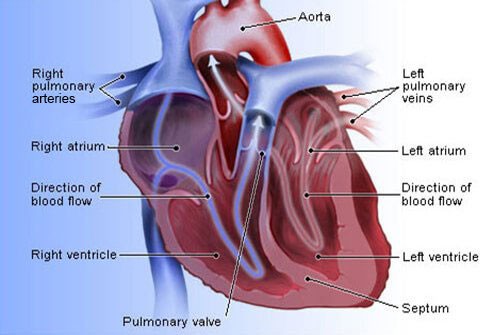
Diagnosed with Cancer? Your two greatest challenges are understanding cancer and understanding possible side effects from chemo and radiation. Knowledge is Power!
Learn about conventional, complementary, and integrative therapies.
Dealing with treatment side effects? Learn about evidence-based therapies to alleviate your symptoms.
Click the orange button to the right to learn more.
- You are here:
- Home »
- Blog »
- side effects ID and prevention »
- Aortic Aneurism-Size Matters
Aortic Aneurism-Size Matters

“Aortic aneurisms are of concern because of their potential risk of death. The likelihood of a mortal event occurring has been linked historically to aneurism size.”
I have an aortic aneurism. Echocardiograms in 2021 and 2022 measured my ascending aorta at 4.6 centimeters. Though I have not been formally diagnosed with Marfan’s Syndrome, Marfan’s Syndrome runs in my family and I consider myself to be “Marfan-like.”
To complicate my health, I developed a late stage side effect called chemotherapy-induced cardiomyopathy in late 2015. I am a long-term cancer survivor and aggressive high dose, cardiotoxic chemo damaged my heart.
When the ascending aorta becomes enlarged (usually considered an aneurism when it reaches a diameter of over 5 centimeters), there are risks and benefits associated with surgical intervention. It is these risks and benefits that I struggle with when thinking about my own aortic aneurism and whether to fix it surgically.
Benefits of Surgical Intervention:
- Prevention of Rupture: The main benefit of surgical intervention is to prevent the aneurysm from rupturing. A ruptured aorta can lead to life-threatening bleeding and requires immediate medical attention.
- Reduced Risk of Dissection: Aortic dissection is a serious condition where the layers of the aorta separate, which can lead to poor blood flow or even blockage of blood flow. Surgery can help prevent or address this.
- Improved Long-Term Survival: Surgery can significantly improve long-term survival rates for patients with an enlarged ascending aorta.
- Quality of Life Improvement: Successful surgery can improve a patient’s quality of life by reducing the risk of complications and allowing them to resume normal activities.
Risks of Surgical Intervention:
- Surgery-Related Complications: Any surgery carries risks, including infection, bleeding, adverse reactions to anesthesia, and other potential complications.
- Recovery Time: Recovery from aortic surgery can be lengthy and may require an extended hospital stay followed by a period of rehabilitation and restricted activity.
- Risk of Stroke: Depending on the type of surgery and the location of the aneurysm, there can be a risk of stroke due to manipulation of blood vessels near the brain.
- Potential for Future Interventions: Depending on the specific circumstances, further interventions or monitoring may be necessary in the future.
- Mortality Risk: While the risk of mortality from elective aortic surgery is relatively low, it is still a serious consideration.
- Individual Health Factors: The risks associated with surgery can vary depending on a patient’s overall health, age, and other individual factors.
Ultimately, the decision to undergo surgery for an enlarged ascending aorta is complex and should be made in consultation with a healthcare team that is familiar with the specific details of the patient’s case. They will consider factors such as the size and location of the aneurysm, the patient’s overall health, and any other individual considerations. It’s important for patients to discuss their concerns and ask any questions they may have with their healthcare provider.
Full disclosure- conventional oncology screwed up my my cancer treatment and I am highly skeptical of all conventional medical professionals.
What do you think? Should I undergo surgery to fix my aortic aneurysm or wait and see? Let me know-
David Emerson
- Cancer Survivor
- Cancer Coach
- Director The Galen Foundation
Surveillance of moderate-size aneurysms of the thoracic aorta
“There are no evidence based guidelines for the surveillance of patients with moderate-sized (<5 cm) thoracic aortic aneurysms (MTAA), who do not warrant surgical intervention…
Thoracic aortic aneurysms account for almost 50,000 deaths annually in the United States [1]. Death is due to rupture or dissection and is strongly linked to the size of the aneurysm [2]. Recent Guidelines for the Diagnosis and Management of Patients with Thoracic Aortic Disease represent the efforts of multiple professional societies (ACCF/AHA/AATS/ACR/ASA/SCA/SCAI/SIR/STS/SVM) to develop evidence based recommendations for the management of all aspects of thoracic aortic disease in order to improve patient outcomes [3]…
Current guidelines recommend surgical intervention for ascending thoracic aortic aneurysms when they are 5 cm in size for patients with genetic predisposition to rupture/dissection such as the connective tissue disorder Marfan’s syndrome, or 5.5 cm in size for non-Marfan patients [3].
Similarly the recommendations are to surgically intervene when a descending thoracic aortic aneurysm is 5.5 cm for a Marfan or 6 cm for a non-Marfan patient [2–6]. These guidelines are based on data showing increased mortality for these patients. Thus, the risk of rupture-related complication exceeds the risk of surgery-related complications for this high risk patient sub-group – rendering an operation as the safer strategy…
Primary end point
Patients were considered to have met the study’s primary adverse composite end point if one of the following outcomes occurred at any point in time during the follow up:
- the size of the aneurysm grew at least 0.5 cm/year;
- the aneurysm grew to be at least 5.5 cm;
- the patient was offered surgery for the aneurysm; or
- there was an aneurysm-related death.
Due to accuracy and ready accessibility, CT scans have traditionally been the diagnostic test of choice to measure aneurysm size. For our patient population, therefore, changes over time in serial CT images were used to evaluate the achievement of the primary study endpoints.
Based on visual inspection, a natural cut point in the data appeared to be located around 4.3 cm. A negative likelihood ratio analysis (NLR) was used to validate this cut point; the smallest NLR was achieved using ≥ 4.3 cm as the threshold measure to differentiate “at-risk” versus “not-at-risk” patients for an adverse, composite event…
Aortic aneurism are of concern because of their potential risk of death. The likelihood of a mortal event occurring has been linked historically to aneurysm size. Elegant natural history studies from the 70s and 80s demonstrated a significant increased incidence of mortality at size greater than 6 cm for the ascending aorta and 7 cm for the descending aorta…
However even with a smaller diameter there is still a risk of complication. Thus even for MTAA patients with an initial aneurysm size of 4–4.9 cm, there is 5 – 10% yearly risk of rupture, dissection or death [12]. To-date, the sub-group of these MTAA patients at highest risk for a future adverse event has not been well established…
While cheaper, safer, and more readily accessible, echocardiography appears to be a less reliable approach to document aneurism size, as the echo findings may be (at least, in part) operator dependent [7]. Moreover, aneurysms of the arch and descending thoracic aorta cannot be accurately followed using an echo-based surveillance strategy, making the use of echo as the sole method of measurement of aortic size controversial…


